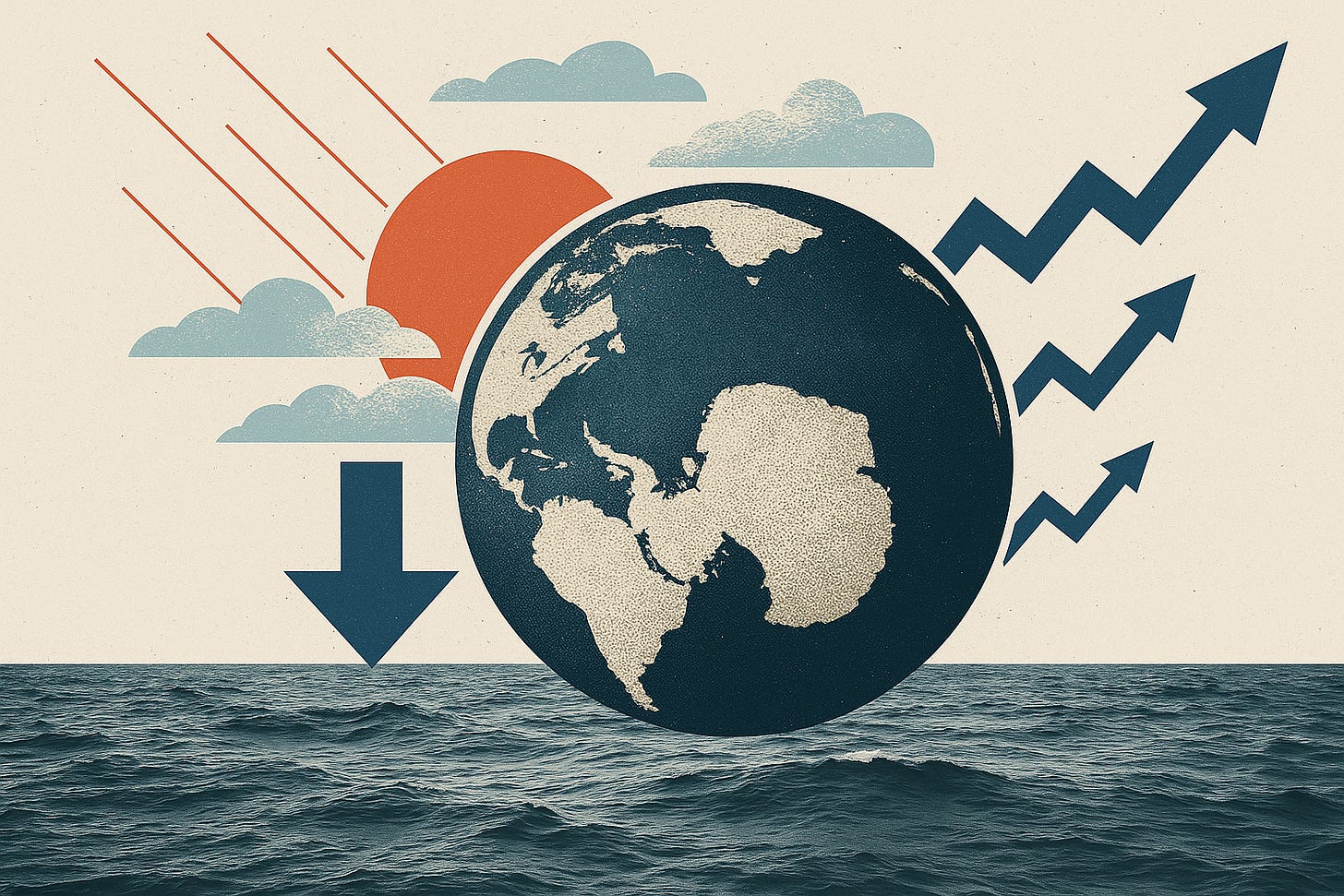How Fixing the Ozone Layer Is Helping the Ocean Fight Climate Change
New research shows that ozone recovery is boosting the Southern Ocean’s ability to absorb carbon, but the benefit only lasts if we cut emissions fast.
Most people think of forests when they think of natural climate solutions, but one of our strongest defences against global warming lies at the bottom of the world in the cold, powerful waters that circle Antarctica.
The Southern Ocean is a carbon sink. It draws huge amounts of carbon dioxide out of the atmosphere and stores it deep in the ocean. This slows down global heating. Even though it only covers about a third of the Southern Hemisphere, it absorbs more carbon than any other ocean on Earth.
New research shows this incredible system has been disrupted. Damage to the ozone layer over Antarctica, caused by chemicals once used in aerosols and refrigerants, changed wind patterns and weakened the ocean’s ability to absorb carbon. The good news is that this damage can be undone. The bad news is that it depends on what we do next.
The Southern Ocean is changing
In the second half of the twentieth century, as the ozone hole grew, wind speeds in the Southern Ocean increased. These stronger winds pulled carbon-rich water up from the deep ocean to the surface. That water already had too much carbon in it, so the surface could no longer take in much more from the atmosphere.
This hidden shift reduced the ocean’s effectiveness as a climate buffer. Now that the ozone hole is healing, thanks to the 1987 Montréal Protocol, scientists are seeing the beginning of a recovery in the Southern Ocean’s carbon sink… but there’s a catch. The healing only helps if we also reduce greenhouse gas emissions.
If emissions stay high, new disruptions caused by carbon pollution will outweigh the benefits of ozone recovery. Winds will stay strong. The ocean will continue to struggle. A vital piece of our climate system will keep slipping out of balance.
Past progress cannot predict the future
The study, led by researchers at the University of East Anglia and the UK’s National Centre for Atmospheric Science, used advanced climate models to simulate different possible futures. In one version of the world, the ozone hole never opened. In another, the hole opened but then healed. In the third, it stayed open permanently.
Each of these scenarios was paired with either high or low emissions. The results showed that the ocean’s ability to take in carbon depends on more than just how much is in the air. It also depends on the temperature of the water, how the wind blows, and how carbon is distributed between deep and shallow layers.
In the past, the damage from the ozone hole played the biggest role in these changes, but in the future, the main driver will be the amount of greenhouse gas pollution we release.
The message is simple… we cannot look to the past to understand what comes next. The ocean is entering a new phase and the choices we make now will shape what it can and cannot do.
The ocean is adapting but it has limits
The ocean is still absorbing carbon, but the way it does this is becoming less effective. As more carbon enters the system, the difference between carbon levels at the surface and in deep water is shrinking. This matters because that difference is what allows the ocean to keep drawing carbon in. As the gradient flattens, the ocean starts to saturate.
In low-emission scenarios, this shift happens slowly. The ocean continues to help us. In high-emission scenarios, the system becomes more unstable. It absorbs carbon in less efficient ways, and its internal balance begins to fray.
This isn’t a dramatic collapse. It is a slow fading of function. A warning sign that the ocean cannot protect us forever.
The take-home message
This research makes one thing very clear. Natural systems are fragile, but they are also responsive. The healing of the ozone layer, triggered by a global agreement to stop using harmful chemicals, has already begun to repair some of the damage to the Southern Ocean.
That’s a reason for hope.
It shows that international cooperation can lead to recovery. It also shows how different environmental issues are linked. A hole in the ozone layer changed the winds, which changed the ocean, which changed the climate.
Every action has a ripple effect.
The Southern Ocean is doing an extraordinary job. It is one of the last powerful forces holding the climate system in check, but we are testing its limits. If we reduce emissions now, we may be able to help it recover. If we don’t, we will push it beyond its ability to protect us.
This is not just about the ocean. It is about our future.
—
For more insights like this, delivered with depth and clarity every week, subscribe to Voice for the Blue. One read. One ocean. No noise.



